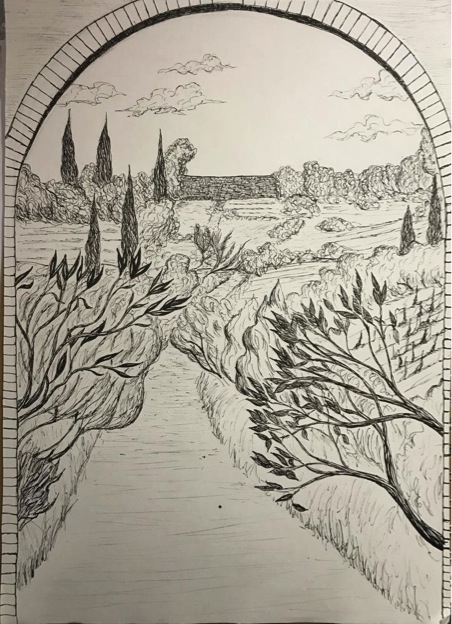Destionation-less
Porta Giustizia, a destination-less place

The gateways of Siena seem to be obvious, simple examples of interstitial space. They are the vacant places between two defined entities, the city, and the rest of the world. But what then, would the sealed gate named the Porta Giustizia be? Is the interstitial space now the inside of the wall itself, or maybe the new space that lies in front of it.
There is no right answer, but the area that interested me was the area directly inside the wall. A very large garden sits here, full of orderly crops and sprawling trees, a miniature countryside between the heart of the city and its encapsulating wall. When one space was closed off, another was created. It would be hard to call this park interstitial space though. It isn’t vacant at all, it’s full, even overflowing. But then again, maybe that is just because it is easy to appreciate gardens. If you examine any seemingly empty space, you realize that no space is really vacant at all- the term interstitial becomes arbitrary. Once you give meaning to the space in between places, it becomes a place of its own. Just like that, interstitial space just relies on your perspective.
There are no journeys and destinations
In the park there is a large metal sculpture of a head. The sign for the exhibit talked about a journey without a destination. A road runs through the park, ending abruptly at the point where the former gate was sealed and the wall now blocks the way. This is literally a journey without a destination. But walking there, I thought that this the lack of destination didn’t take anything away from the journey that I had on this sunny day in this beautiful garden.
This got me thinking that, much like the term interstitial space, the journey/destination duality can also seem arbitrary at times. They’re two terms that we use to donate events to distinguish them from each other. For me, the destination did not exist. I was just walking. There are no journeys and destinations, no spaces and interstitial spaces. I came to the simple conclusion that there are only places and the action of moving forward through them.
A journey with no destination at all
Interestingly enough, the Porta Giustizia is where the city of Siena would take its condemned criminals to hang. For many people, this really was the last space they would move though, the last journey. As someone who is not religious, it represents a journey with no destination at all. But, just as the destination-less path in the garden was beautiful, this destination-less ending doesn’t seem to take away the meaning of the journey at all.
So, I drew the road leading from the entrance of the garden to the sealed off wall, meandering through the wild looking garden, only to end suddenly. It is not exactly how the place appears in reality- but I tried to capture the allure and complexity of the place, the way every space flows into the next, and the beauty of a garden that is in no way diminished by the wall at the far end.